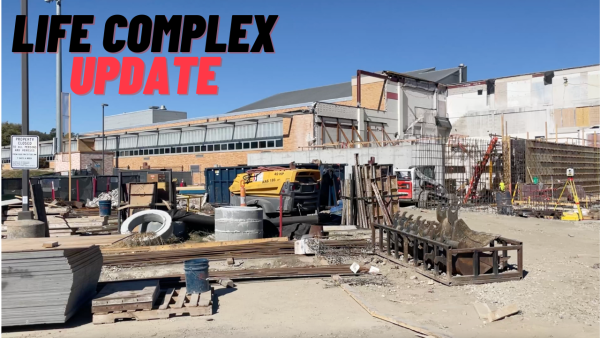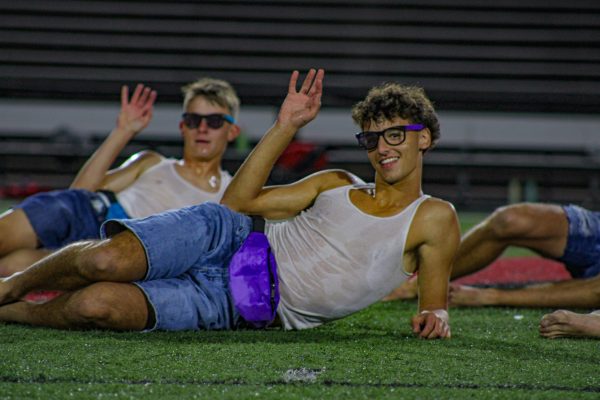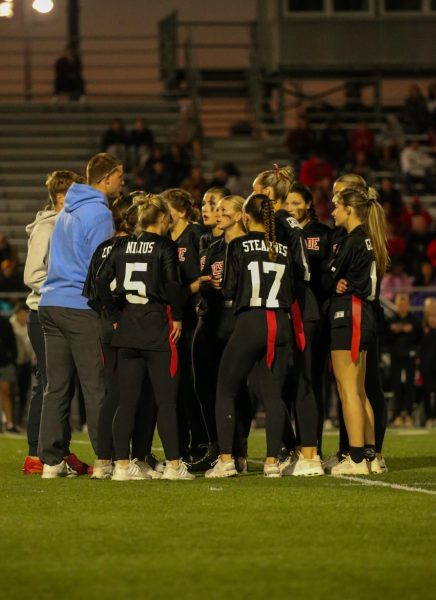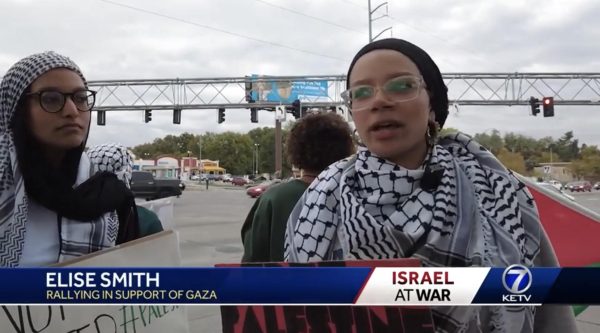UNMC Infectious Disease Expert and Westside Staff Share Thoughts on Future of COVID
Courtesy of The University of Nebraska Medical Center Twitter
Medical Director with the Nebraska Biocontainment Unit Dr. Angela Hewlett shared her thoughts on the COVID-19 vaccine and what rollout might look like for members of the Westside Community
With the third wave of COVID-19 coming to a close, Westsidel has returned to 100% capacity in green mode. As cases fall in the area, vaccine rollout has suddenly accelerated, and the largest distribution group, phase 1C, will soon begin receiving the vaccine. A recent unscientific survey conducted by Westside Wired found that 73% of Westside High School students plan to take the vaccine when it is available to them. Medical Director with the Nebraska Biocontainment Unit Dr. Angela Hewlett shared some of her thoughts about the vaccine and the future of COVID-19.
Hewlett said she believes social distancing and mask-wearing will remain necessary if the vaccination rate our survey estimates is accurate. Hewlett said this is because we don’t have enough data to know how soon immunity starts to wear off.
“[It wouldn’t be enough], although it would be absolutely fabulous if we got 75% or moreof students vaccinated, we don’t yet know enough about the long-term of this vaccine [or] how long [the] vaccines protect you,” Hewlett said. “So, until we know more, we plan to continue, and we should, keep doing masking and social distancing, things that we know work. There will be kids that won’t take the vaccine, and those kids may have susceptible family members that are also unvaccinated. Masks are not going to last forever, but while we’re still learning about the vaccine and how long immunity lasts, we still need to continue masking, hand-washing [and] distancing.”
Hewlett also addressed concerns about E484K, a mutation found in multiple COVID-19 variants that some scientists think could weaken the vaccine.
“It’s too early to tell at this moment, but it looks like [with] the mutations we have seen in [COVID-19], it looks like the vaccines we have available now will work… but it’s something that we learn more about every day,” Hewlett said.
On the topic of side effects, Hewlett, who has taken the vaccine herself, provided assurances that the vaccine is not dangerous, and that those taking it are not at risk. However, she noted that some mild cold-like symptoms do occur the day after, but these are simply proof the vaccine works.
“Obviously, when a new vaccine is introduced, people are concerned, and I totally get that,” Hewlett said. “This vaccine, though, looks really good. I know there are a lot of people that think that this was a hurried effort, but really these [mRNA] vaccines have been in testing for about 15 years now. I’m very confident in [the vaccine], enough to take the vaccine myself. I was actually one of the first [people] in Nebraska to receive the vaccine. I wouldn’t have done that if I had any concerns whatsoever about the development of the vaccine, or the safety.”
Westside High School Nurse April Matthews has also taken the vaccine. Matthews believes that the COVID-19 vaccine is absolutely safe. Since the virus in the vaccine is simply an mRNA template, she said that it is safe and she trusts it.
“I have received my first shot and decided to get my shot after I researched that the additives in this vaccine are minimal, it is not a live virus but an mRNA virus which you cannot be infected or get covid from, and the research on other Coronaviruses are older than the oldest student in this school – meaning I trust the fact-based, scientific research.” Matthews said.
Among other things Hewlett discussed was the matter of racial diversity and medical conditions in the testing groups. Some have raised concerns claiming that certain groups of people were not tested for the vaccine, but Hewlett offered her assurances that this was unequivocally false.
“[In] the vaccine trials that were done, they really made an effort to enroll people from minority groups and a variety of different ages.” Hewlett said. “The vaccine trials really did make an effort to enroll people with different medical problems, whether that’s diabetes, heart problems, lung problems, etc.”
Hewlett also emphasized the importance of containing false information about COVID-19, especially pertaining to the vaccine. She noted that some may be impossible to convince, but combating misinformation on the Internet is worthwhile.
“Misinformation is good for nobody, so what we really need is to follow science, not witchcraft,” Hewlett said. “Know the science, know some good sites to go to. I’d just advise everybody, if they’re looking at social media and they see something that they know is false, try to correct it if you really want to go there. Sometimes, with friends and family, you don’t want to get into too much of an argument on social media. But, if you can correct something overtly, I think it’s people’s responsibility to do that.”
Hewlett expressed confidence in and excitement about the new mRNA vaccine type used to develop the Pfizer and Moderna vaccines. She said the vaccines are safe, properly tested, and promising. Not only is the COVID-19 vaccine safe, but the mRNA technology used to develop it is as well. She also restated that this technology has been under testing for other diseases long before COVID-19.
“It is a new type of vaccine, I understand [anxiety about the new technology],” Hewlett said. “This is a new virus, and it makes a lot of sense for people to be concerned.” “There are a wide variety of different types of vaccines, all of which at one point were new vaccines. But this is a type of vaccine that has been in development for about 15 years, but the mRNA itself is the first vaccine to really come to the general public using mRNA. The reason it’s been under development for 15 years is because there were some other illnesses people were looking at developing this type of vaccine for because it looks like it could really protect people.”
Matthews shared the confidence that testing was adequate and properly conducted.
“Coronaviruses are not new and there is roughly 2 decades of research… into these viruses,” Matthews said. “Animal to human transmission, MERS and SARS Coronaviruses- have been studied for years. This is the reason this vaccine was able to be produced so quickly. The novel COVID-19 strain has gotten go ahead from the FDA to be administered and tens [of] thousands of participants have participated in trials all over the globe.”
The Pfizer and Moderna vaccines are absolutely unable to give you COVID-19, Hewlett reminded the public.
“There are vaccines that use live viruses, this is not one of them,” Hewlett said. “There is no live SARS-Cov-2 in this one. It can’t give you [COVID-19].”
Looking ahead to the upcoming rollout, the CDC indicates that Phase 1C of vaccine distribution, which is for the high-risk individuals and essential workers, is larger than Phase 2, which is for the healthy population.
“1C includes a lot of people, everybody [age] 65 and up [and] everybody [age]16-64 with high-risk medical conditions,” Hewlett said. “It also includes people in correctional facilities, homeless shelters, etc. That’s a lot of individuals. There’s a lot of people [age] 16-64 with high risk medical conditions, diabetes is very common, heart disease is very common, even in people younger than 65. Obesity is definitely a risk factor. I’ve seen a lot of young people who don’t have any other medical issues but who are overweight who have problems. There’s a lot of people in that group, 1C. Phase 2 is really the totally healthy individuals”.
Your donation will support the student journalists of Omaha Westside High School. Your contribution will allow us to purchase equipment and cover our annual website hosting costs.
Hi, my name is Dan Magruder! I am a staff writer for Westside Wired this year. I am currently a junior and this is my third year on Wired. A fun fact about...








